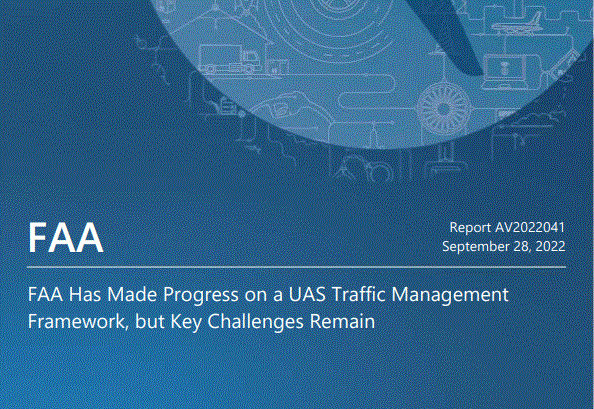The US Office of Inspector General (OIG) – in evaluating the Federal Aviation Administration’s (FAA) efforts to develop and implement UTM, including the pilot programme and any interactions FAA has had with other Government agencies – has concluded: “the FAA has made initial progress in developing a UTM framework and testing UTM concepts through the UTM Pilot Program….However, FAA has not established milestones for implementing the policies and processes necessary to allow for UTM deployment or finalized how the Agency plans to use the UTM Pilot Program results to inform near-term efforts.”
According to the OIG report:
“For example, FAA continues to develop and refine its concept of operations and has deployed some initial UTM capabilities, such as an automated system for authorizing UAS operations near airports. However, FAA has not established milestones for implementing the policies and processes necessary to allow for UTM deployment or finalized how the Agency plans to use the UTM Pilot Program results to inform near-term efforts. While UTM stakeholders stated that the pilot program was successful, they noted common areas of concern with UTM implementation, such as slow progress, the need for additional rules for remotely identifying UAS, and lack of information on next steps. In addition, FAA has not yet completed coordination with other Government agencies.”
The OIG has made four recommendations. “FAA concurred with two of our four recommendations to improve FAA’s efforts to develop and implement a UTM and partially concurred with the other two,” said the organisation. “Based on FAA’s response, we consider all four recommendations resolved but open pending completion of planned actions.”
The recommendations are:
- Establish a process that requires FAA to review the UTM Pilot Program and Field Test results and determine whether the results can inform rulemaking, the final implementation plan, concept of operations documents, and the FAA BEYOND program.
- Implement enhanced processes for communicating UTM information to update industry stakeholders on FAA’s plans for UTM implementation as well as ongoing efforts.
- Develop milestones for near-term UTM efforts and broader timelines for when FAA expects to implement policies and processes for reviewing and approving UTM technologies and capabilities, and establish a process for measuring and updating progress with achieving the milestones.
- Document FAA’s plan for continued collaboration with NASA and other Federal agencies regarding ongoing and future UTM activities.
In conclusion, the OIG reports:
“The safe integration of small UAS into the NAS is a multifaceted endeavor, requiring coordinated efforts within FAA, across multiple agencies, and with industry. To reach the end-state of UTM implementation, FAA faces challenges in ensuring that the systems, infrastructure, policies, rulemaking, regulations, and other requirements are all in place. While FAA successfully completed its UTM Pilot Program and is developing a plan for implementing UTM, the lack of a timeline for UTM implementation has resulted in uncertainty for industry stakeholders because they need to plan and align their efforts with FAA’s rollout of UTM capabilities. Key steps to make further progress and maintain industry support will be establishing processes to communicate and incorporate UTM testing results into follow-on efforts, as well as setting clear milestones for the next steps in UTM development and implementation.”
For more information
https://www.oig.dot.gov/library-item/39114
https://www.oig.dot.gov/sites/default/files/FAA%20Implementation%20of%20UAS%20Traffic%20Management%20FInal%20Report%20-%2009-28-22.pdf




